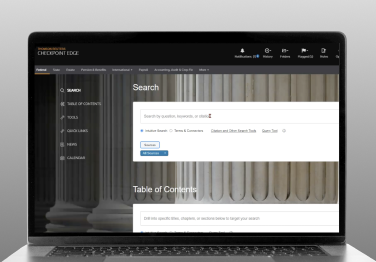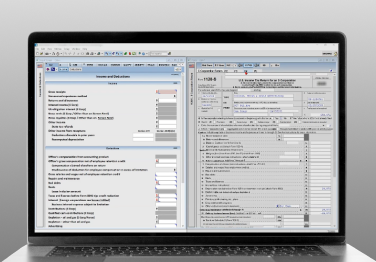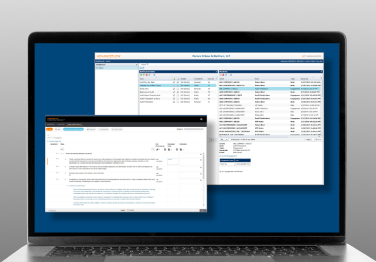Tax and accounting solutions
Powerful AI tools and best-in-class content for tax, accounting, and audit professionals
Increase efficiency, mitigate risk, and provide premium client services with enhanced AI capabilities and expert insights

Harness the power of our tax and accounting solutions
Quickly and easily find answers to even the most difficult and unpredictable tax and accounting issues with advanced search engines. Access state and global charts to cross reference compliance regulations. Perform audits and prepare tax assessments with easy-to-use platforms that help you fact check and verify your work.
Gain access to up-to-date information on global and domestic tax issues. Find expert insights into tough accounting questions, get answers to complex scenarios, and ensure you always have the most recent compliance updates.
Our content is written by highly qualified editors who have practiced in the world's leading accounting firms, government agencies, and corporate tax departments. These subject-matter experts provide insight into complete cases and break down tough issues into digestible information.
See firsthand how our products can help
Time-consuming returns and audits are a thing of the past. No matter what your role is, take advantage of solutions to help you check for errors, compare state charts, check for out-of-state tax exemptions, and so much more.
Better research in a fraction of the time
Predictive search, advanced filters, and suggested concepts help you find what you’re looking for fast. Multi-state tax charts let you make quick comparisons across the board and reduce state and local tax (SALT) time.
Tax returns take time, but we can help you cut that time
Save tax workflow time with complete federal, state, and local tax programs. Link business entities and personal tax returns, pull in previous-year data, and easily prepare multi-state returns.
Unlock several advanced solutions with this single suite of products
This comprehensive package of solutions allows you to complete audits faster and correctly, customize work programs, and manage reviews, audits, compilations, and preparations in one spot.
Take a look at what other tax professionals are saying

Checkpoint Edge
The people have spoken
"There’s obviously been a lot of thought put into the [Checkpoint Edge] platform itself…it is easier to drill down into, it’s more user friendly."
T.C. Burgin, CPA
Discover all the ways Checkpoint Edge helped T.C. Burgin, CPA, PC.
Explore the benefits of Checkpoint Edge
Cloud Audit Suite
A comprehensive suite of products
“An all-inclusive audit solution that integrates and brings information together where everybody can see it, is something we prioritized because if you have to go to three different places, it’s going to add time."
Ross H. Roye, CPA, Gray, Blodgett & Company, PLLC
Discover ways in which the products of Cloud Audit Suite can change your work day.
See everything Cloud Audit Suite has to offer

Questions about our products and services? We’re here to support you.
Contact our team to learn more about our tax and accounting solutions.
Contact us


